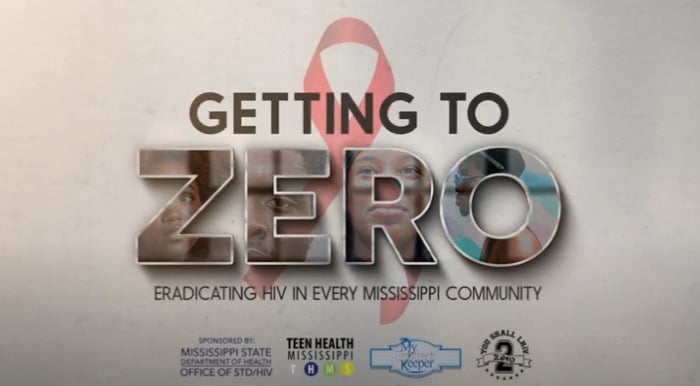
With some of the highest diagnosis rates in the country, there’s a lot of work to be done on HIV in Mississippi. From spreading information and training to providing better healthcare in our communities, we’re seeing growing momentum that can get us to zero new cases and put an end to the HIV/AIDS epidemic.
Know the Numbers: HIV in Mississippi
Similar to STD rates in Mississippi, the most recent HIV and AIDS statistics in Mississippi tell us that the battle is far from over. In 2018, there were 9,466 people living with HIV in Mississippi and 477 people were newly diagnosed. Jackson had the 4th highest HIV and highest AIDS diagnosis rates of any US metropolitan area, and several rural counties were even higher.
Digging into the data even further, one of the most troublesome trends has to do with new HIV cases among youth. According to the Centers for Disease Control via AIDSVu, youth make up 50% of new sexually transmitted infection cases despite representing only 27% of the sexually active population. They also account for over ⅕ of all new HIV diagnoses.
When it comes to eradicating HIV, focusing on Mississippi’s young people is critical.
How Are We “Getting to Zero”?
For World AIDS Day on December 17, 2020, Teen Health Mississippi (THMS) premiered our new film, Getting to Zero: Eradicating HIV in Every Mississippi Community, via live stream on Facebook. The 20-minute documentary takes a close look at the intervention strategies being used to combat HIV in Mississippi from a diverse coalition of experts, medical professionals, community advocates and artists. In addition to THMS, you’ll hear from:
It’s this unique combination of groups working together that offers the hope we can get to zero. In the words of Melverta Bender from MSDH, “An HIV epidemic says that this is the time to be innovative, to be flexible, to be more innovative, and bring partners to the table that haven’t been at the table before.” While there’s still much to learn about HIV and AIDS, the leaps and bounds that have already been made in research and treatment make getting to zero possible.
Creating HIV/AIDS Resources & Capacity
THMS wants youth and their communities to have the resources they need to make healthy decisions. In addition to peer-to-peer sex education, our approach includes sharing evidence-based information like the Choose Your Method tool and promoting access to youth-friendly healthcare and condoms. In Getting to Zero, THMS Executive Director Hope Crenshaw remarks:
“At the end of the day, communities need access to information and resources. And at the end of the day, if Teen Health isn’t there, we still want to make sure that capacity within those communities is being built. So not only do we work with youth, we’re all about making sure that, once we leave, the resources are still there and that communities themselves can take care of each other. And that’s what’s really important.”
Looking Ahead
Getting to zero is within our reach if we continue to push forward with innovation, collaboration, resources and care. At THMS, we know the power of youth can help bring an end to this epidemic, and we’re here to help make that happen.
What do you think of the film and the work being done across the state? What questions do you have about HIV/AIDS in Mississippi? Join us in the comments below with your thoughts and reactions.